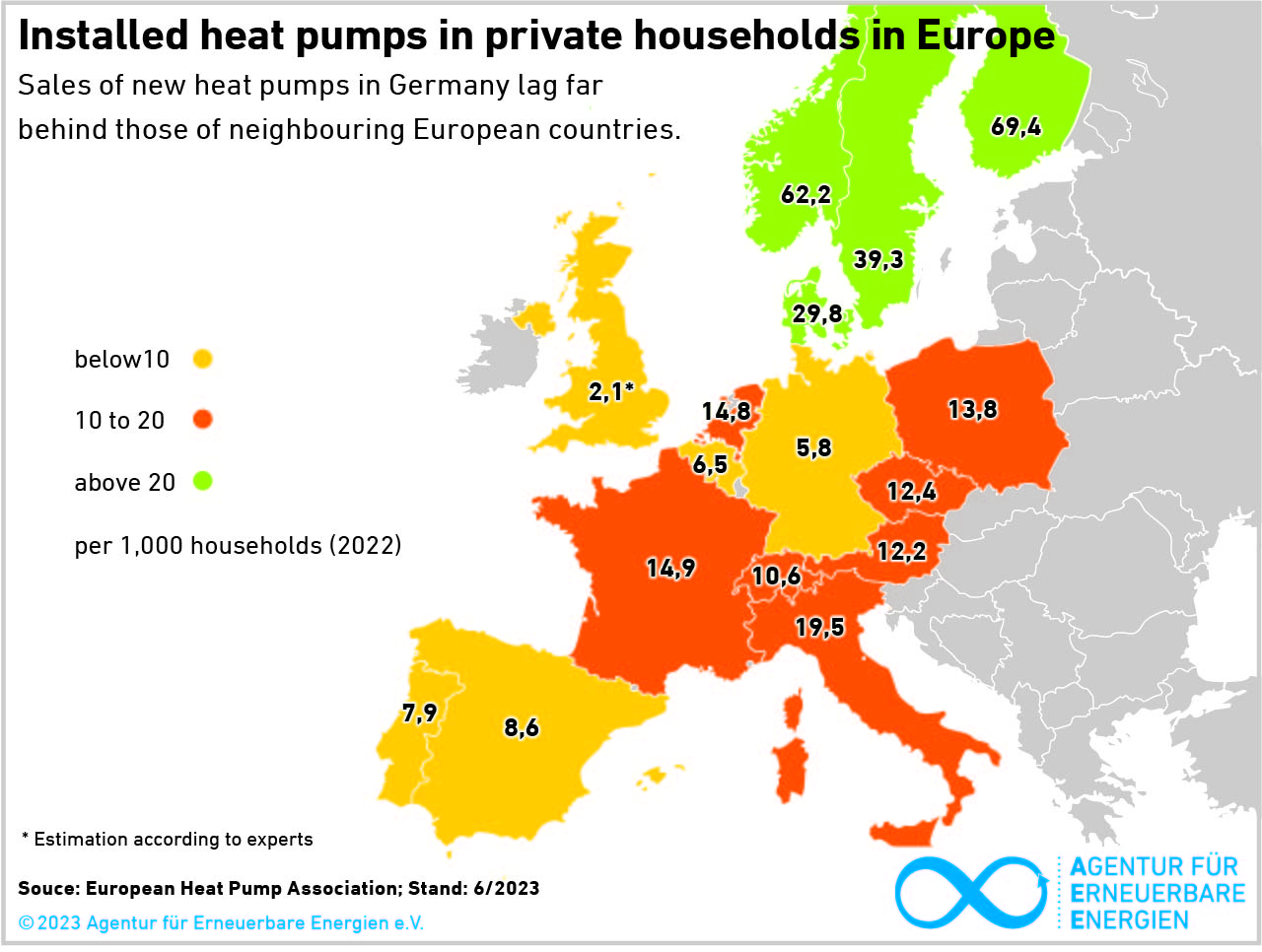Heating and cooling from renewables gradually increasing
According to Eurostat, approximately half of the EU's total gross final energy consumption is attributed to energy used for heating and cooling. Over time, the gross final consumption of renewable energy for heating and cooling purposes in the EU has gradually risen, primarily due to the contribution of biomass and heat pumps.
However, in 2021, the gross consumption of all fuels experienced an increase, primarily driven by economic recovery following the lifting of COVID-19 restrictions. Consequently, the proportion of renewable energy in gross final consumption for heating and cooling purposes declined by 0.1 percentage points (pp), dropping from 23.0% in 2020 to 22.9% in 2021. Nonetheless, this figure is almost double the value observed in 2004, which stood at 11.7%. The growth of renewable energy in heating and cooling can be attributed to developments in the industrial sector, services, and households, including the adoption of heat pumps for heating, which has facilitated the electrification of heating.Among the EU Member States, Sweden stood out with renewable sources accounting for over two-thirds (68.6%) of the energy used for heating and cooling in 2021, primarily sourced from biomass and heat pumps. Estonia (61.3%), Latvia (57.4%), and Finland (52.6%) followed, all utilizing a significant share of biomass.
Conversely, Ireland (5.2%), the Netherlands (7.7%), and Belgium (9.2%) recorded the lowest proportions of renewable sources for heating and cooling.
All EU Member States have reported an increase in the share of renewable energy for heating and cooling between 2004 and 2021. The most substantial increases were observed in Cyprus (+32.1 percentage points; pp), Malta (+30.3 pp), Estonia (+28.0 pp), and Sweden (+22.7 pp). Ireland (+2.3 pp), Belgium (+6.3 pp), and the Netherlands (+5.5 pp) experienced smaller increases in comparison.


Social Media